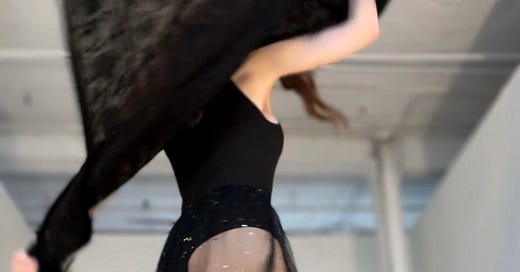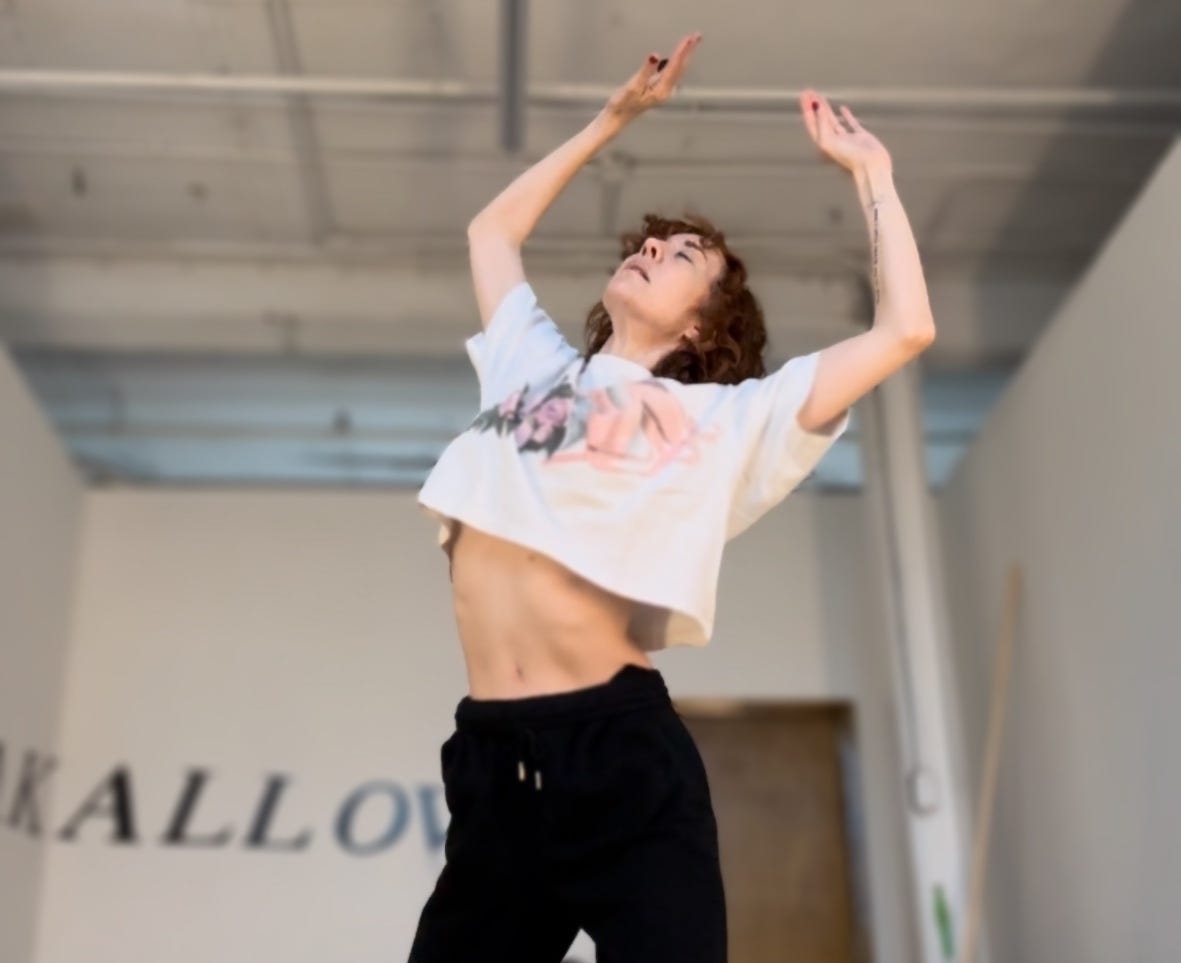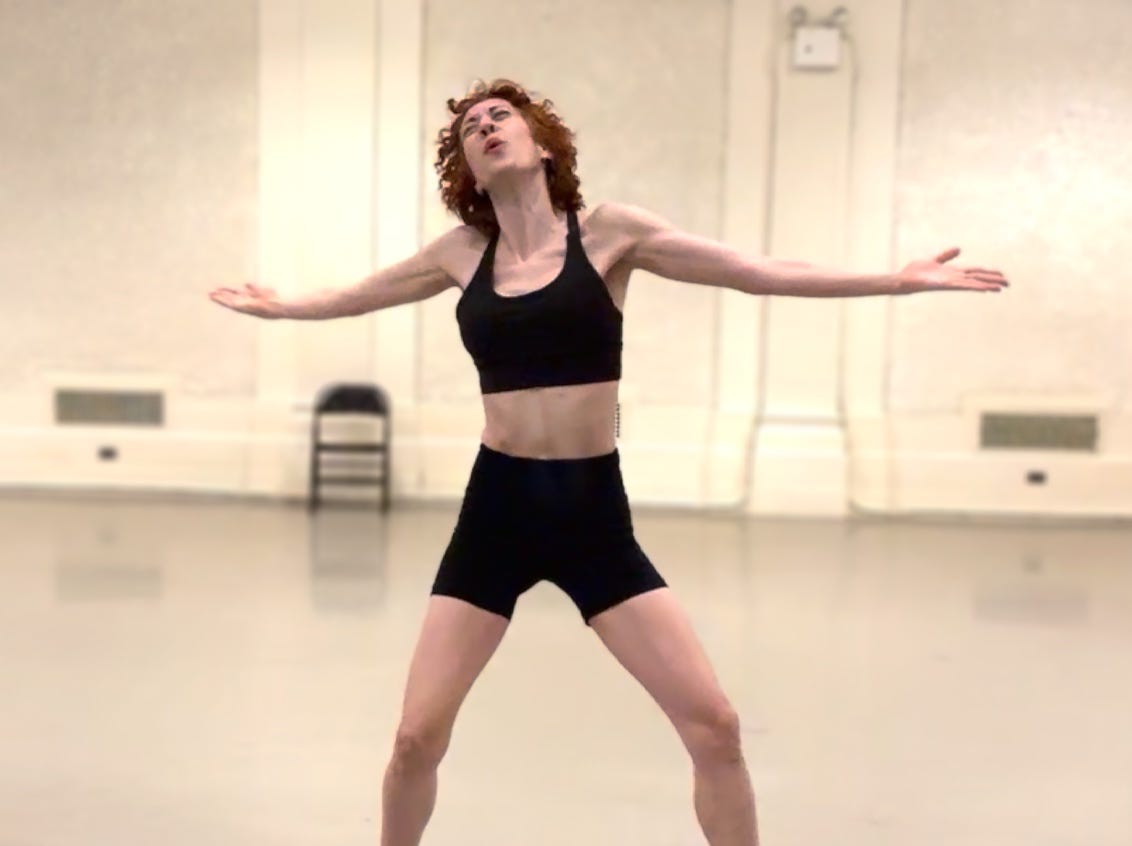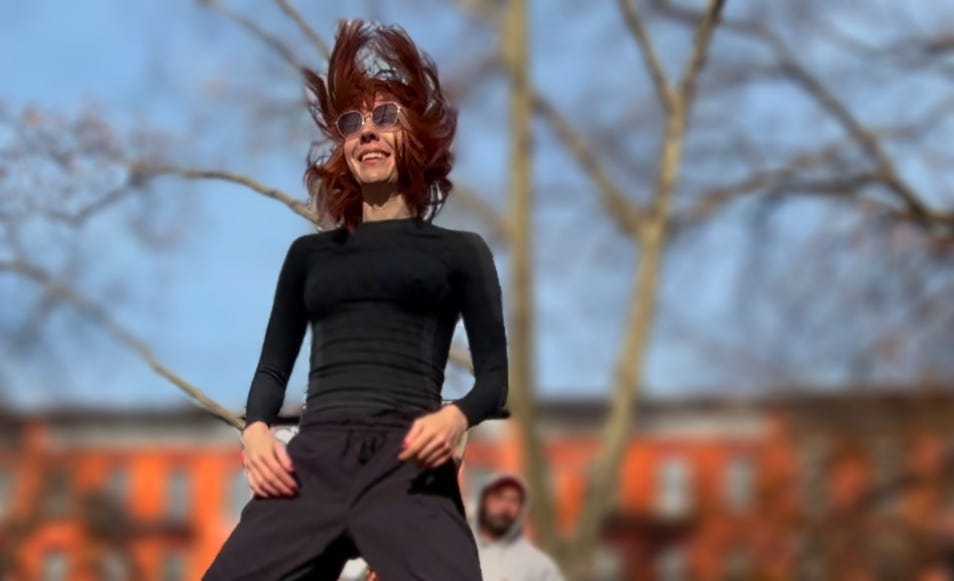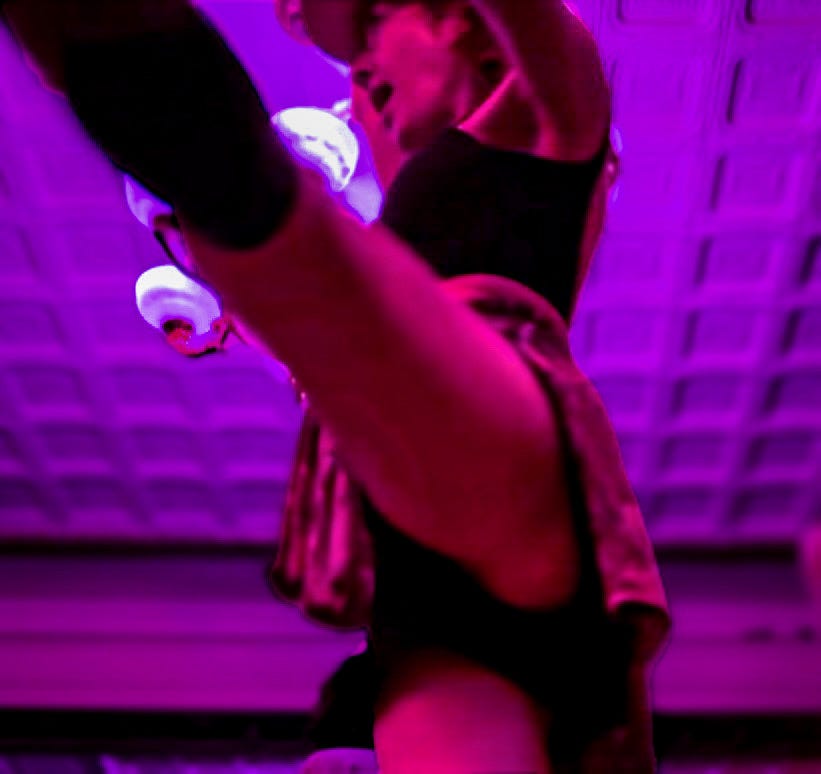Despite my affinity for equestrian sports and general horse culture, as well as three summers on a theatre contract in Kentucky embracing small-town karaoke and endless fields of bluegrass, it wasn’t until a year and a half ago in New York City that I discovered (and was completely surprised by) a love for line dancing.
It was summer 2023. I was less than a year out from finishing chemotherapy for breast cancer, about eight months into medical menopause, and still dealing with significant brain fog from both. One thing chemo (or maybe menopause, or maybe both) really took from me was an ability to sequence. I’d never had issues with executive function prior to treatment, and it has been excruciating to rebuild something it feels unfair to have lost.
Everyone knows about the big losses with cancer: breasts. hair. There are so many other hidden losses along the way. Ones that continue to remind you that you’ll never be who you were before, long after a surgeon reconstructs your chest and your hair grows back.
Dance has always been a part of my life in some capacity. My mother was a professional dancer in her 20s and would later sub in as a teacher at my childhood dance studio. I grew up surrounded by the arts, including dance, taking ballet, tap, and jazz. I wasn’t a competitive dancer because I wasn’t willing to sacrifice my riding lessons, figure skating, or gymnastics, but I performed in recitals and it was always something I enjoyed.
In college I was required to take a few dance classes each semester, primarily theatre dance, and as an adult I’d find myself in the occasional drop-in class. After a significant breakup in 2016, I dove into adult ballet and tap classes at Alvin Ailey, along with theatre and contemporary classes at a beautiful, judgment-free, and since-closed studio called Broadway Bodies.
When the pandemic descended over the world in 2020, I attempted a few online dance classes, but quickly realized I need the accountability of being in person. As the world cautiously reopened throughout 2021, I still wasn’t feeling comfortable in sweaty indoor dance or workout settings. And of course, in early 2022, my doctor found a lump in my left breast, and the remainder of that year unfolded differently than what I’d put on my vision board. I felt great and stayed active, but was limited by my fragile immune system.
It was a cold dreary day in late March 2022 when I had my biopsy, the kind of early spring day that still feels very much like winter, with a dampness that infiltrates your bones and makes you wonder if you’ll ever be warm again. I was lying in a dark room with my left arm over my head, the technician and radiologist silently communicating with each other, with only an occasional grunt or point at the screen.
I knew.
Suddenly, I was floating above my body, looking down at the scene, at my long and wild copper hair sprawled out behind my head, at my bare chest with sweet small natural breasts I knew would soon be amputated.
“I’m going to write down the names of some breast surgeons,” the radiologist said gently. I slammed back down to earth. “I think you’re going to need one.”
I wasn’t floating above anymore, but I also wasn’t back in my body. After that dissociative moment, I felt a level of disconnect with my body that I can’t even fully describe. In many ways I think it served me well during surgeries and treatment, my brain’s attempt to protect us from trauma. But I was numb, in an eerie state of calm, walking beside myself.
In February 2023 I was cleared by my reconstructive surgeon to return to “normal” life. Graduating from active cancer treatment feels like flying without a net. After a long stretch of constant appointments and surveillance, suddenly you’re rereleased back into the wild, wobbly and tender. It should feel freeing, and it does, but it’s also terrifying. The world carried on while your life stood still. Reentry is difficult, but one thing I knew for certain is that I needed to get back into my body.
I’d existed somehow just outside of my own body for nearly a year, and I knew it was time to reconnect. It was time to come home to myself.
A fellow breast cancer survivor who has become a close friend teaches a variety of dance styles in gentle, judgment-free spaces with an ethos rooted in anti-perfectionism. Have fun, be free, harness your inner child. Everyone is a dancer. It felt safest to reenter a dance space guided by someone with this shared experience. I was very much a baby bird, or a newly born foal, shaky and awkward as I tried to be one with my body again, a body that was so different. These are some of my favorite classes I’ve ever taken, and I value that space and the friendship to this day.
Around this time I also returned to classes at Ailey, an old familiar, a space I’d known before. It felt like I could put together some pieces of my former self in the energy of the studio. There was a comfort in standing in my favorite spot from years before, when my biggest problem was some guy who made me cry, looking out the same window at the same street. It was grounding, it felt stable.
In April 2023 I was speaking at a breast cancer event and met a former Broadway dancer and fitness instructor who had developed a free post-mastectomy movement program. Her fitness studio also offers dance cardio classes, which piqued my interest. I’d already begun to realize in other dance classes that my ability to sequence had tanked, and while I was a bit nervous about my stamina and capacity to learn simple but fast combos, I took the plunge. The repetition and nonstop pace forced my brain to start connecting order and patterns again.
As spring turned to summer, and my chemo curls sprouted wildly on my head, I found a class through the dancer who is a fellow survivor, a challenging contemporary class far beyond my skill level, but one that was open to all. It forced my body to approach movement in a different way, and it forced my brain to attempt to sequence in a different way, as all the movement was fluid and blended together.
It was beautiful, it was stunning. I was terrible at it, but I loved it.
The dancer who taught that class was very into line dancing, and it wasn’t long before I decided to check it out. I’d been told the learning curve is a bit different than other styles, but once it clicks, it clicks.
Perhaps because it was a type of dance I had literally zero experience with in my life, I was more intimidated popping into that first beginner line dancing night than I had been at any other class. I’m exclusively a visual learner so I usually settle into the front of a class (generally considered a bold move as a tall person), especially with my newfound sequencing issues, to give myself the best chance at actually learning and feeling successful.
However, I timidly found a spot in the very back of the room at line. As I attempted to put the footwork together, honing in on the more experienced line dancers in my view and closely watching their movements, I felt a glimmer of something clicking. I got it. It wasn’t perfect, but it didn’t have to be. There are no stakes, just fun. By the time we did the dance we were learning at full speed, I was able to put the steps together in the correct order. On the first try!
At that point in my life, that was huge. It wasn’t anything I’d ever struggled with before, and it was serving as a constant reminder of the many things cancer had robbed of me. It was a turning point. It absolutely wouldn’t have been possible without all of the other incredible dance spaces I’d been in for the six months leading up to that night. But something about line dancing made the synapses in my brain connect in a new way, in a needed way. It made my brain purr.
Recently, I unearthed video of that first night. It is very clear how disconnected I still was from my body. I’m tall and always have limbs to deal with in dance, but it was giving newborn foal trying to stand for the first time. However, the footwork was there. I got the dance.
I got the dance.
I enjoyed line dancing, and I went regularly, but it wasn’t until November 2023 that I got hooked. As I stood in the back of the room that evening, watching everyone dance to an Elle King song, I felt so present. I felt myself rejoin my body. When it was time to learn the next dance, I inched a bit forward in the room.
Soon after I forced myself to the front of the room, so I could really learn, and by spring of 2024 I started practicing with some folks from class on weekends, line dancing in the sunshine on basketball courts in the parks of New York City. Then there were the sunset practices followed by ice cream cones, moonlit line practices on balmy Friday nights, and long beach days line dancing on sand in the salty air.
The beauty of line is that you’re both surrounded by people and dancing on your own. Once you learn the dance, you can just let it go and trust the movement, trust the energy of the space, trust yourself. It’s almost a fugue state, whirling and turning with a hundred sweaty strangers. You can allow yourself to get lost in the music.
Most line dances are four-wall or two-wall dances, meaning you’re doing the same sequence on multiple walls, over and over again. It’s a digestible 32-counts (sometimes more) that flow for the duration of the song. If you get lost, you can find it again on the next wall. Just keep moving. Just let the energy of the room guide you.
There’s comfort in the repetition, in the structure of it all. It’s reliable, it’s dependable, and within that, there’s freedom to explore.
Once you’re solid on the basic steps, you can add flare. You can make it your own. It can be cheeky, turns out it can be incredibly sexy, and it’s just pure fun. In partnership with all the other dance spaces I’ve been in, line dancing did what all the king’s horses and all the king’s men failed to do: it put Humpty together again.


